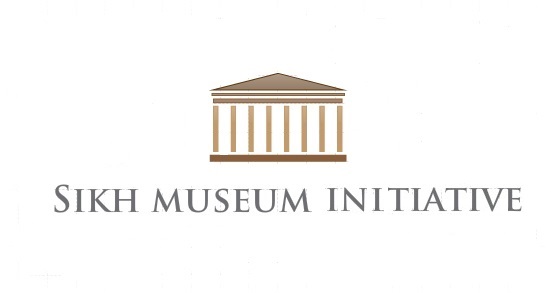The Ten Gurus and Guru Gobind Singh’s Four sons, an early 19th century painting, shows Guru Nanak and the nine that followed. The Sikh Gurus developed the founding principles of the Sikh faith.
With their distinctive dastaar, or turban, and the unshorn facial hair worn by men, Sikhs are often mistaken for Muslims, or even Hindus.
Sikhism, however, is a distinct religion, one that arose more than 500 years ago in Punjab, a region of South Asia in what is now northwest India. Today it has more than 22 million followers, making it the world’s fifth-largest religion.
Yet the religion is little known or understood here. So in 2004, when the Smithsonian Institution’s National Museum of Natural History embarked on an effort to create an exhibit offering an overview of the Sikh religion and culture, it received, enthusiastic support and assistance from the American Sikh community.
The exhibit, titled “Sikh: Legacy of the Punjab” was a big success in Washington, D.C., and has since made stops in Santa Barbara and Fresno, California. On Saturday it makes its first Texas stop, opening at the Institute of Texan Cultures in conjunction with the 28th annual Asian Festival.
The exhibit runs until Jan. 3, 2016.
“Sikhism was founded with the vision of liberating all people in all senses of the word; political, social and religious,” explained Simran Jeet Singh, who grew up in San Antonio and is a Senior Religion Fellow for the Sikh Coalition, which promotes civil and human rights. “The faith believes in absolute freedom and equality for all.”
Because in India one’s name also indicates one’s caste, or social status, Sikhs adopt the same last name, Singh, or “lion,” for men, and Kaur, or “princess,” for women.
“It’s an example of Sikh’s vision of absolute equality,” Singh said.
The lavish, colorful exhibit features more than 100 pieces of artwork and artifacts dating from the 18th century to the present. They include examples of the Guru Granth Sahib, the Sikh holy book; military items such as the distinctive curved sword Sikh warriors carried in battle; and samples of the nishan (popularly called the khanda), a prominent Sikh symbol that depicts the doctrine of Deg Tegh Fateh (Victory to Charity and Arms), which reflects the Sikh ideal of working toward public welfare.
The exhibit’s centerpiece is a scale model of the Darbar Sahib, a sacred place at Amritsar, India, that’s commonly referred to as the Golden Temple.
Many of the items on display are on loan from members of the Sikh community, and the exhibit’s 108-page companion book (published for the first time in advance of the ITC exhibit’s opening) includes a long list of donor names.
“We did a lot of outreach when we were first putting the exhibit together, asking Sikhs and others how we should arrange it and what it should include,” said Paul Michael Taylor, director of the Smithsonian’s Sikh Heritage Project and the show’s original curator. “There’s a real sense of equality among Sikhs, and so much of the exhibit was crowd-funded by individual donors rather than corporate foundations. It reflects the Sikh belief that everyone should give something to support it.”
In San Antonio, the exhibit will contain additional displays addressing Sikhs in Texas. It’s a history that dates only as far back as the early 1900s, when small numbers of Sikhs — about 50 in total — arrived in the El Paso area from California and Mexico. Most were farmers and apparently came to Texas because at the time it was illegal for them to own land in California.
“Exact numbers are hard to pin down,” said Bryan Howard, director of exhibits at ITC, “because they tended to be classified as Hindu or simply Indian on census forms.”
The number of Sikhs living in the U.S. remained low from the 1920s to the 1940s, when immigration from India was all but banned. It wasn’t until the Immigration and Nationality Act of 1965 eased restrictions that their numbers began to grow. Today, there are about 50,000 to 100,000 Sikhs living in Texas and about 300 Sikh families, or 1,000 individuals, living in the San Antonio area.
The exhibit’s continuing success is a result of its ability to explain the often misunderstood religion, Taylor said.
“It struck a chord among members of the Sikh community, who feel they’re often misrepresented in the popular culture,” he said. “But it has also attracted those …who want to learn more.”
More: http://www.expressnews.com/entertainment/arts-culture/article/Exhibit-explains-often-misunderstood-religion-6079570.php#/0

